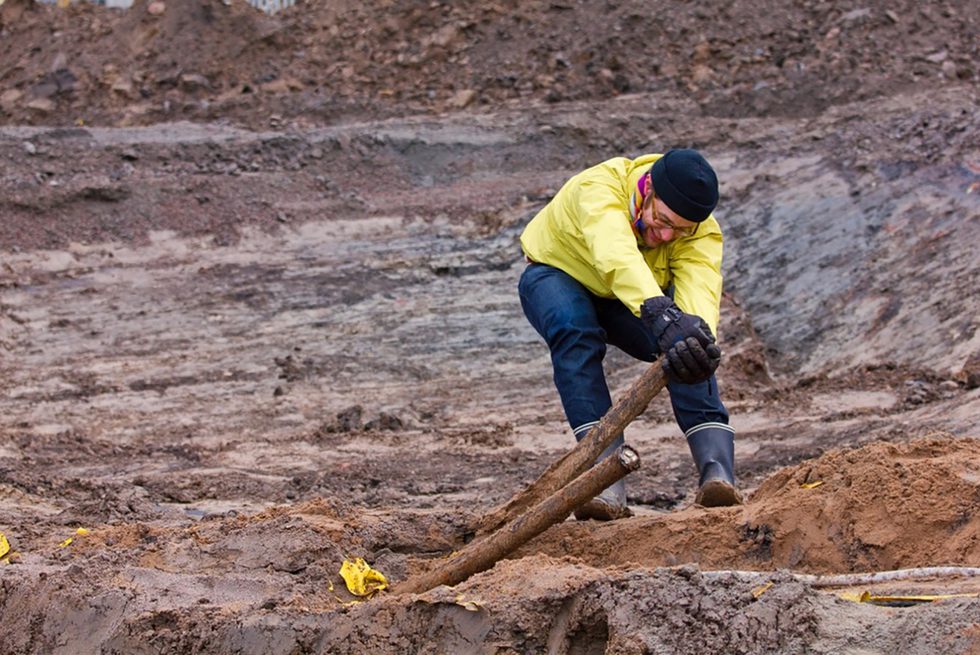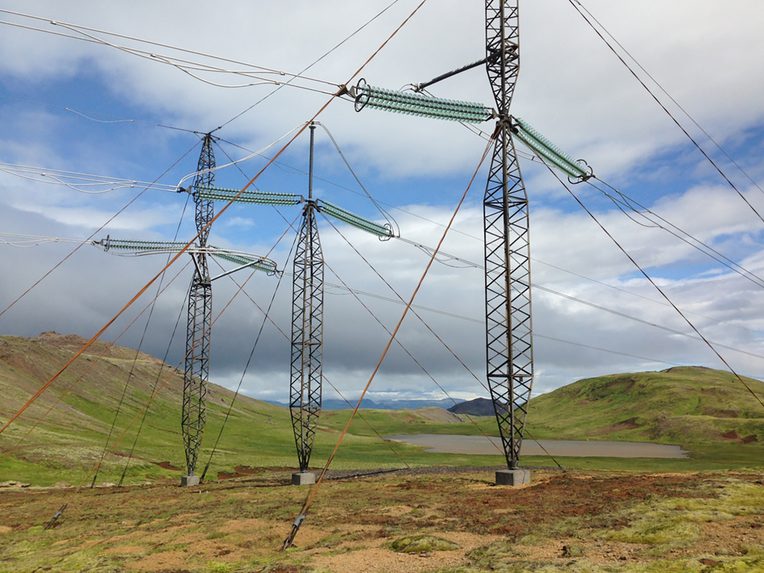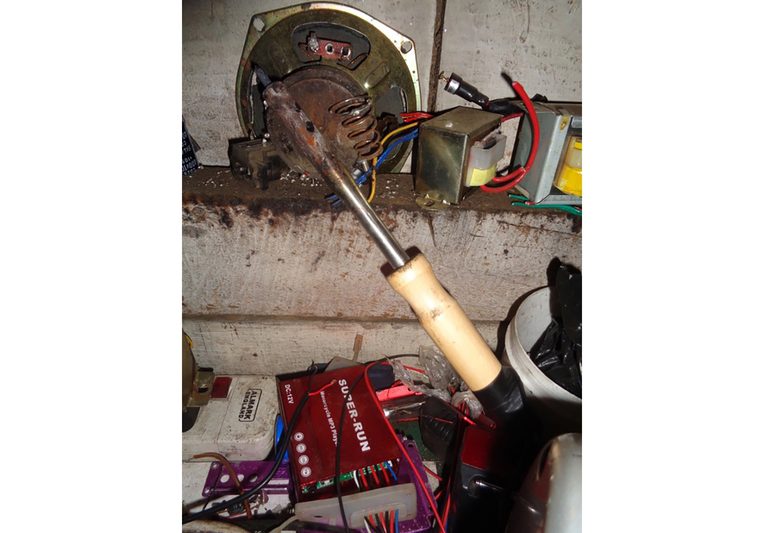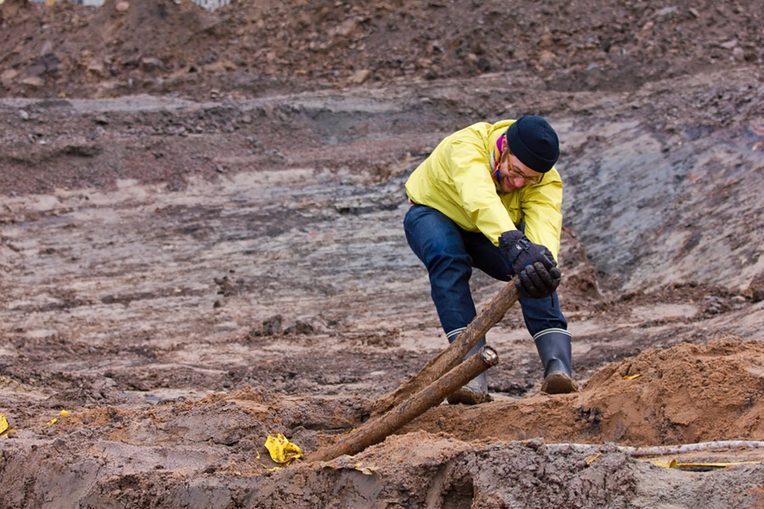Our Electric Metals
From the Series: Our Lives with Electric Things
From the Series: Our Lives with Electric Things


Aluminum has been dubbed “packaged” or “solidified” electricity (Sheller 2014, 52), given the prodigious quantities of power it takes to extract this metal from its core oxide, alumina. At the same time, aluminum’s supple strength, as well as its lightness, conductibility, and noncorrosive properties, make it a crucial component of the electrical transmission lines that circulate energy around the globe. While aluminum relies on electricity, electricity relies on aluminum. Two of modernity’s critical infrastructures thus loop together.
Nowhere are the tensions within this looping relationship more evident than the volcanic landscapes of Iceland, as its fiery cauldrons are transformed into electricity for aluminum production. But as noxious hydrogen sulfide (H2S) emerges alongside these transformations, health complaints mount in a nearby town: asthma, eye irritations, and worryingly higher incidences of cancer.
While providing indisputable evidence for these claims is difficult, residents do point toward a strange paradox that is afoot. Making aluminum requires pylons to carry the electrons necessary for this metal’s production—the same metal that, in turn, is used to make parts of the pylons. But the release of intensely sulfuric gas from deep within the earth is proving to be too much not just for the town, but also for aluminum itself. Although lauded for its noncorrosive properties, oxidizing processes are highly visible on the aluminum rods of the pylons. The metal’s inability to resist the powers of the volcanic forces that give it electrified life affords locals a potential moment of political resistance as they point to the ways in which aluminum cannot resist the corrosive effects of its own making, and by extension, the danger it poses to the town. In relating aluminum to itself as disturbing and toxic, these residents are, at the same time, demonstrating some of the looping paradoxes inherent in our lives with electric things.

The soldering iron rests on the workbench. It cannot support itself but requires a stand to prevent its angled tip from causing unwanted, untargeted destruction. The technician, my mentor, picks it up by its bulky plastic grip. He touches it to his other palm, sniffs it to his nose. It’s ready. It’s warm. Its time has come.
Despite its high-tech habitat, the soldering iron is a simple being; it melts things. By turning electrical energy into heat, it can create new joints and dismantle old ones, open and close connections, write and erase.
The technician pinches his ink, the solder wire, between thumb and forefinger. Then, with the iron poised in the other hand, he approaches the circuit board like a conductor might approach an orchestra, baton in hand.
The soldering iron is mute. A silent tool, it does not communicate with a beep or offer any visual cues; rather, it speaks through smells. It calls out by melting plastic: “Are you going to use me or what?” It cries: “You didn’t put me back in my stand!” as it toasts wood. Or it burns skin to say: “I’m still hot, turn me off.”
Without a battery, the iron must be tethered to the grid at all times. So, with another job done, the technician weaves the iron over and under cables, in front of objects and behind them, moving his body in order to return the soldering iron to its stand.
Too big and too clunky for printed circuit boards, the manual precision of the soldering iron has no place on the new, machine-drawn map of electronics. However dextrous its user, the iron is being written out of our electrical story.
The technician asks me to unplug the soldering iron and puts it down, next to his pen.

Brittlestars are luminescent deep-sea creatures that disconnect limbs as a deviating bait whenever predators appear. Karen Barad (2007) makes brittlestars into an allegory of connectivity, asking: when do cut-off limbs stop being part of the brittlestar and instead start belonging to the environment? She indicates that this occurs when the limb stops fulfilling its function as a deviator, suggesting that connectivity is not a matter of mere physicality.
What if we considered the possibilities of brittlestars’ disconnected limbs as akin to human conditions of waste? What if, for example, brittlestars cut off so many limbs that they cluttered the seabed? Would that affect our understanding of brittlestars as a phenomenon? Or of connectivity itself?
If we think across the boundaries between the activities of humans and nonhumans, we can extend Barad’s allegory to consider how urks, a term that I have coined to denote disconnected cables (Wallsten 2015), relate to the electric grid. Since urks have accumulated as surplus in maintenance processes over extended periods of time, they are significant in numbers as well as weight. Given their metallic content, they have a certain geological relevance, indicating the resource profligacy of industrialized societies, right underneath our cities’ streets.
The existence of an Urk World entails a dualistic understanding of infrastructures as containing both a connected and a disconnected realm. It also suggests disruptive ethnographies of maintenance, and an understanding of maintenance as ontology-altering; sorting out and cutting off urks from system and system from urks. To perceive urks as integral to infrastructures is to “bring into memory, and thus bear witness to events which we do not wish to remember, nor to be remembered for” (van Wyck 2012, 185). It is a step toward recognizing how everything that we perceive as solid and coherent relies on the production of surplus and disarray.
Barad, Karen. 2007. Meeting the Universe Halfway: Quantum Physics and the Entanglement of Matter and Meaning. Durham, N.C.: Duke University Press.
Sheller, Mimi. 2014. Aluminum Dreams: The Making of Light Modernity. Cambridge, Mass.: MIT Press.
van Wyck, Peter. 2012. “Northern War Stories: The Dene, the Archive, and Canada’s Atomic Modernity.” In Bearing Witness: Perspectives on War and Peace from the Arts and Humanities, edited by Sherrill Grace, Patrick Imbert, and Mike Michael, 174–88. Montreal: McGill/Queen’s University Press.
Wallsten, Björk. 2015. “The Urk World: Hibernating Infrastructures and the Quest for Urban Mining.” PhD dissertation, Linköping University.